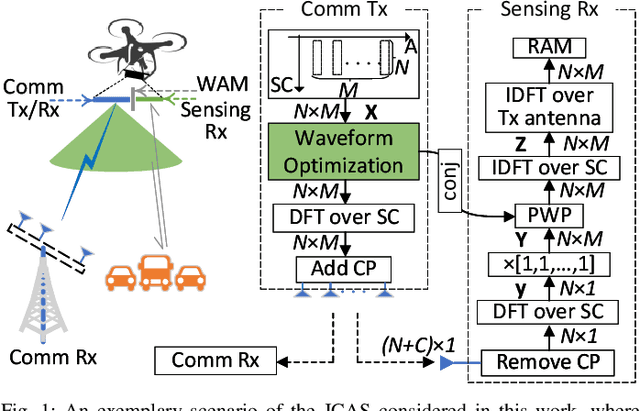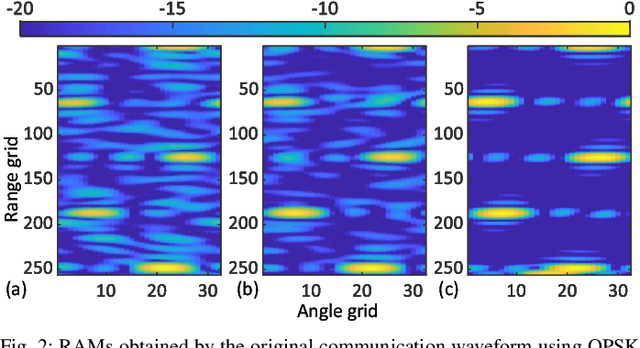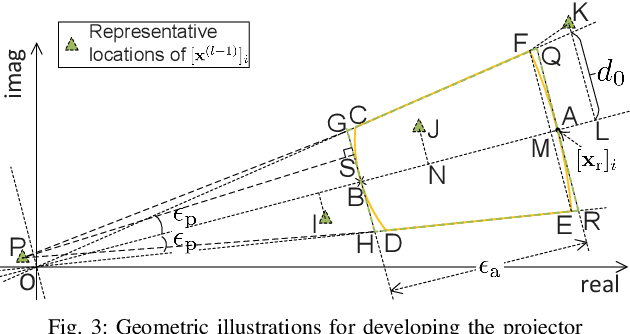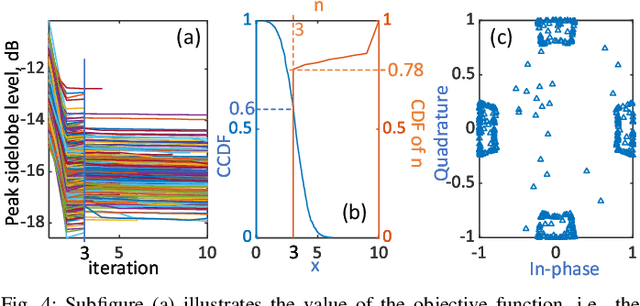Shanzhi Chen
Coverage and Rate Analysis for Cell-Free LEO Satellite Networks
Nov 09, 2023Abstract:Low-earth orbit (LEO) satellite communication is one of the enabling key technologies in next-generation (6G) networks. However, single satellite-supported downlink communication may not meet user's needs due to limited signal strength, especially in emergent scenarios. In this letter, we investigate an architecture of cell-free (CF) LEO satellite (CFLS) networks from a system-level perspective, where a user can be served by multiple satellites to improve its quality-of-service (QoS). Furthermore, we analyze the coverage and rate of a typical user in the CFLS network. Simulation and numerical results show that the CFLS network achieves a higher coverage probability than the traditional single satellite-supported network. Moreover, user's ergodic rate is maximized by selecting an appropriate number of serving satellites.
Joint Communications and Sensing Employing Optimized MIMO-OFDM Signals
Aug 21, 2022



Abstract:Joint communication and sensing (JCAS) has the potential to improve the overall energy, cost and frequency efficiency of IoT systems. As a first effort, we propose to optimize the MIMO-OFDM data symbols carried by sub-carriers for better time- and spatial-domain signal orthogonality. This not only boosts the availability of usable signals for JCAS, but also significantly facilitates Internet-of-Things (IoT) devices to perform high-quality sensing. We establish an optimization problem that modifies data symbols on sub-carriers to enhance the above-mentioned signal orthogonality. We also develop an efficient algorithm to solve the problem based on the majorization-minimization framework. Moreover, we discover unique signal structures and features from the newly modeled problem, which substantially reduce the complexity of majorizing the objective function. We also develop new projectors to enforce the feasibility of the obtained solution. Simulations show that, compared with the original communication waveform to achieve the same sensing performance, the optimized waveform can reduce the signal-to-noise ratio (SNR) requirement by 3~4.5 dB, while the SNR loss for the uncoded bit error rate is only 1~1.5 dB.
 Add to Chrome
Add to Chrome Add to Firefox
Add to Firefox Add to Edge
Add to Edge